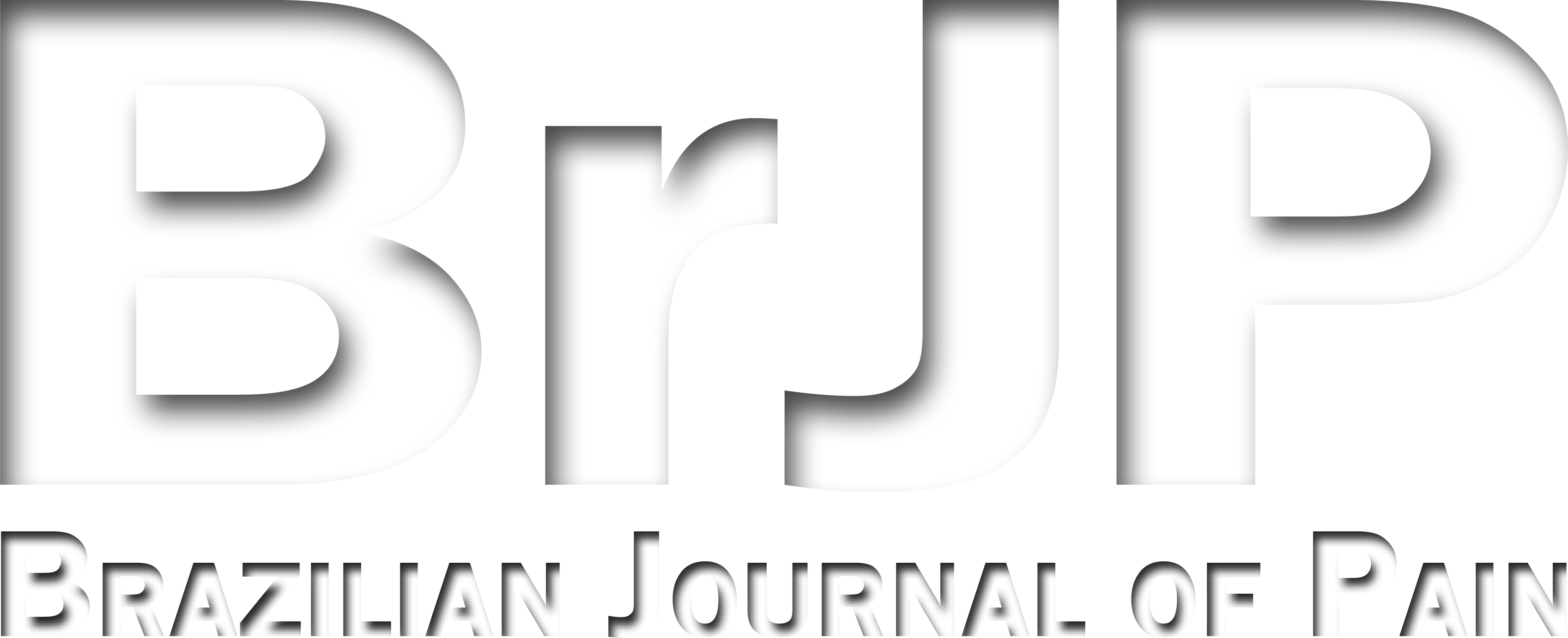Pain management in patients with knee osteoarthritis by ultrasound-guided genicular nerve block. Case reports
Manejo de dor em pacientes com osteoartrite de joelho por bloqueio dos nervos geniculares guiado por ultrassonografia. Relato de casos
Thiago Alves Rodrigues; Eduardo José Silva Gomes de Oliveira; João Batista Santos Garcia
Abstract
Keywords
Resumo
Palavras-chave
References
Neogi T, Zhang Y. Epidemiology of osteoarthritis. Rheum Dis Clin North Am. 2013;39(1):1-19.
Nazarinasab M, Motamedfar A, Moqadam AE. Investigating mental health in patients with osteoarthritis and its relationship with some clinical and demographic factors. Reumatologia. 2017;55(4):183-8.
de Rooij M, van der Leeden M, Heymans MW, Holla JF, Häkkinen A, Lems WF. Prognosis of pain and physical functioning in patients with knee osteoarthritis: a systematic review and meta-analysis. Arthritis Care Res. 2016;68(4):481-92.
Bannuru RR, Osani MC, Vaysbrot EE, Arden NK, Bennell K, Bierma-Zeinstra SMA. OARSI Guidelines for the non-surgical management of knee, hip, and polyarticular osteoarthritis. Osteoarthritis Cartilage. 2019;27(11):1578-89.
DeRogatis M, Anis HK, Sodhi N, Ehiorobo JO, Chughtai M, Bhave A. Non-operative treatment options for knee osteoarthritis. Ann Transl Med. 2019;7(Suppl 7):S245.
Crawford DC, Miller LE, Block JE. Conservative management of symptomatic knee osteoarthritis: a flawed strategy?. Orthop Rev. 2013;5.
Kim DH, Choi SS, Yoon SH, Lee SH, Seo DK, Lee IG. Ultrasound-guided genicular nerve block for knee osteoarthritis: a double-blind, randomized controlled trial of local anesthetic alone or in combination with corticosteroid. Pain Physician. 2018;21(1):41-52.
Demir Y, Güzelküçük U, Tezel K, Aydemir K, Taskaynatan MA. A different approach to the management of osteoarthritis in the knee: Ultrasound guided genicular nerve block. Pain Med. 2017;18(1):181-3.
Qudsi-Sinclair S, Borrás-Rubio E, Abellan-Guillén JF, Padilla Del Rey ML, Ruiz-Merino G. A comparison of genicular nerve treatment using either radiofrequency or analgesic block with corticosteroid for pain after a total knee arthroplasty: a double-blind, randomized clinical study. Pain Pract. 2017;17(5):578-88.
Choi WJ, Hwang SJ, Song JG, Leem JG, Kang YU, Park PH. Radiofrequency treatment relieves chronic knee osteoarthritis pain: a double-blind randomized controlled trial. Pain. 2011;152(3):481-7.
Protzman NM, Gyi J, Malhotra AD, Kooch JE. Examining the feasibility of radiofrequency treatment for chronic knee pain after total knee arthroplasty. PM R. 2014;6(4):373-6.
Kesikburun S, Yasar E, Uran A, Adigüzel E, Yilmaz B. Ultrasound-guided genicular nerve pulsed radiofrequency treatment for painful knee osteoarthritis: a preliminary report. Pain Physician. 2016;19(5):E751-9.
Helayel PE, Conceição DB, Oliveira Filho GR. Bloqueios nervosos guiados por ultra-som. Rev Bras Anestesiol. 2007;57(1):106-23.
Hirasawa Y, Okajima S, Ohta M, Tokioka T. Nerve distribution to the human knee joint: anatomical and immunohistochemical study. Int Orthop. 2000;24(1):1-4.
Yasar E, Kesikburun S, Kiliç C, Güzelküçük Ü, Yazar F, Tan AK. Accuracy of ultrasound-guided genicular nerve block: a cadaveric study. Pain Physician. 2015;18(5):E899-904.
Tran J, Peng PWH, Lam K, Baig E, Agur AMR, Gofeld M. Anatomical Study of the Innervation of Anterior Knee Joint Capsule: Implication for Image-Guided Intervention. Reg Anesth Pain Med. 2018;43(4):407-14.
Franco CD, Buvanendran A, Petersohn JD, Menzies RD, Menzies LP. Innervation of the anterior capsule of the human knee: implications for radiofrequency ablation. Reg Anesth Pain Med. 2015;40(4):363-71.
Fonkoué L, Behets C, Kouassi JK. Distribution of sensory nerves supplying the knee joint capsule and implications for genicular blockade and radiofrequency ablation: an anatomical study. Surg Radiol Anat. 2019;41(12):1461-71.
Kim SY, Le PU, Kosharskyy B, Kaye AD, Shaparin N, Downie SA. Is genicular nerve radiofrequency ablation safe: A literature review and anatomical study. Pain Physician. 2016;19(5):E697-705.
Ergönenç T, Serbülent GB. Long-term effects of ultrasound-guided genicular nerve pulsed radiofrequency on pain and knee functions in patients with gonarthrosis. Sakarya Med J. 2019;9(1):52-8.
Strand N, Jorge P, Freeman J. A rare complication of knee hematoma after genicular nerve radiofrequency ablation. Pain Rep. 2019;4(3).
Submitted date:
02/14/2020
Accepted date:
05/10/2020


